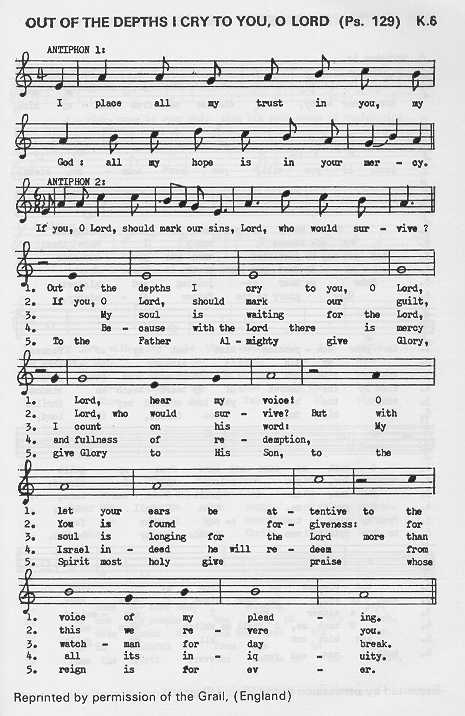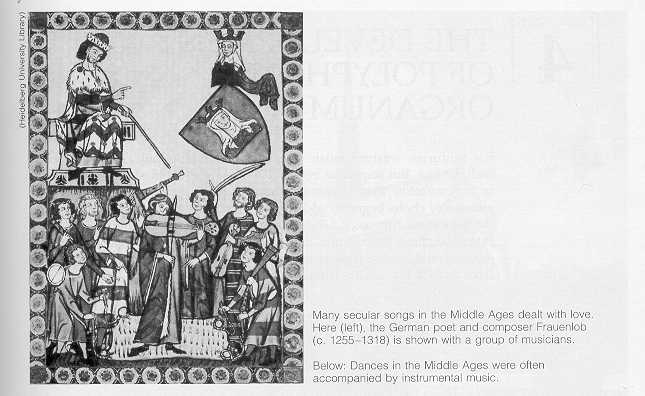
Whereas, the illustration here is an example of psalms sung in churches today

Gregorian ChantGregorian chant conveys a calm, otherworldly quality; it represents the voice of the church, rather than of any single individual. It's rhythm is flexible, without meter, and has little sense of beat. The exact rhythm of chant melodies is uncertain because percise time value is not notated. But its free-flowing rhythm gives Gregorian chant a floating, almost improvisional character. The melodies tend to move by step within a narrow range of pitches. Depending on the nature and the importance of the text, they are simple or eloborate;some are little more than recitations on a single tone; others contain complex melodic curves. Gregorian chant is name after Pope Gregory I (the Great), who reorganized the Catholic liturgy during his reign from 590 to 604. Although medieval legend credits Pope Gregory with the cration of Gregorian chant, we know that it evolve over many centuries. Some of its practices, such as the singing of psalms, came from the Jewish synagogue of the first centuries after Christ. Most of the several thousnad melodies known today were created between A.D 600 nad 1300.The composers of Gregorian chant are like sculptors who decorated the early medieval churches.

Whereas, the illustration here is an example of psalms sung in churches today

As you could see the, the modes of the song differ over the centuries and yet the quality of both of these music scripts is still intact.
Secular
Music
Many secular songs in the Middle Ages dealt with love.It was said that wandering minstrels(or juggler) performed music and acrobatics in castles, taverns, and town squares and without civil rights and on the lowest social level, with prostitutes and slaves, only the lucky few found steady work in the service of the nobility. They were the ones who performed the love songs about many things like the Crusades, dance songs, and spinning songs. But not all these minstrels are men. In southern France, there were women troubadours-who address their songs to men.Funny huh!!But at least equality exists here!!. During the middle ages, it was also very difficult to gain information or what was happening around them. So, these people are the ones with the important source of informaion. They sang songs written by others;played instrumental dances on harps, fiddles,etc, and by this way the news was passed on.
Here are two pictures protraying the lifestyle during the time of secular music

Renaissance - Baroque - Classical - Romantic - Twentieth Century - Composers
Homepage